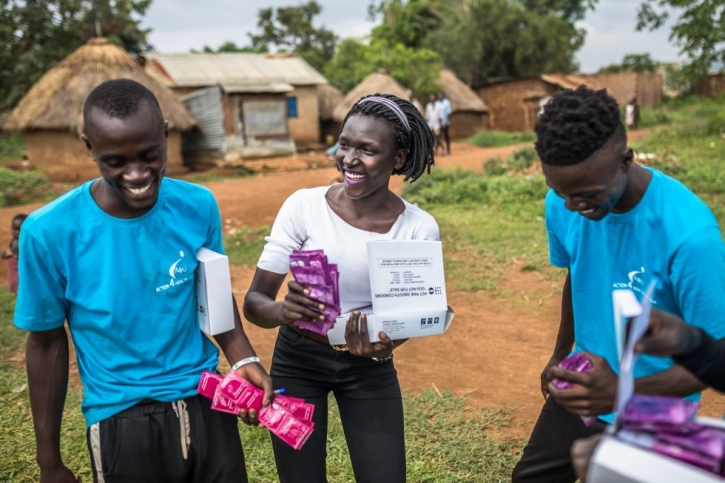ADVOCATING FOR INCREASED BUDGET ALLOCATION FOR FAMILY PLANNING IN UGANDA

As a strategy to influence budget allocation for reproductive health and family planning (RH/FP), DSW and Action 4 Health Uganda (A4HU) conduct annual FP budget analyses at the national and subnational level in the districts of Kamuli, Mityana, Mukono and Tororo to inform and advocate for improving budget allocation to the health sector – particularly RH/FP.
The study applied A4HU/DSW methodology in which focus group discussions (FGDs) were conducted among the community to assess attitudes on FP services, availability of services at health facilities, and district health budgets for resource allocation and expenditure. At the national level, budget and expenditure analysis was tracked through three main agencies: the National Medical Stores (NMS), Regional Referral Hospitals (RRH) and Ministry of Health (MoH).
The analysis focused on main five components where resources are spent, namely commodities, advocacy and mobilisation, service delivery, capacity building and other services.
Findings
Analysis of the last three financial years (FY) shows that the health sector budget allocation has increased by 38 percent from 1.8trn UGX (approx. 487.89bn USD) to 2.5trn UGX (approx. 677.63bn USD), while the RH/FP budget has grown by 10 percent from 13.85bn UGX (approx. 3.754m USD) in FY 2017/18 to 15.23bn UGX (approx. 4.128m USD) in FY 2019/20.
In FY 2019/20, approximately 97 percent of the RH/FP budget was spent on commodities, with only 3 percent allocated to MoH advocacy, service delivery and capacity building.
Results from FY 2019/20 indicate that NMS received 96.8 percent of the entire budget, while RRH and MoH received 2.5 percent and 0.7 percent respectively. The overall analysis shows that only 6.5 percent of the national budget was allocated to the health sector in FY 2019/20, despite the Government of Uganda committing to allocate 15 percent of its annual budget to the health sector during the Abuja Declaration.
“A4HU has helped us greatly in improving funding for family planning. When the project started, we were at 17m but, during the assessment, we reached 48m and the justification was that we had the highest need for family planning. We had significant engagement in advocacy with cultural leaders, religious leaders and politicians.” — Jackson Osuddu, Senior Assistant Secretary, Tororo.
RH/FP budget allocation and expenditure by component
In the last three years, the breakdown of the budget for FP commodities has been ambiguous, meaning that there is no specific allocation amount. Commodities were then allocated almost the entire RH/FP budget, as shown in the numbers given above.
The study results indicate improvement in the utilisation of FP due to sensitising by health workers and implementation partners such as DSW/A4HU. Consequently, the majority of community members appreciate FP and utilise FP services. However, there are still challenges that hinder the effective utilisation of FP methods by community members. These include misconceptions about FP; side effects associated with certain FP methods, which discourage potential users; opposition by men, cultural leaders and religious leaders; poor attitudes and lack of skills on the part of health workers; long distances to access FP services; and limited supplies of FP commodities.
“…most youths are so much in support of family planning, especially girls because they are not ready to conceive at an early age.” — Mwesigwa Aminsi Gaddaf, Youth Champion, Kamuli District.
Recommendation
Expenditure at the subnational level was not assessed due to poor expenditure tracking, creating an accountability gap. To solve this, we recommend developing the capacity of health workers to track expenditures and advocating to the Ministry of Finance Planning and Economic Development (MoFPED) and local governments to have expenditure data streamlined in all budget documents.
Additionally, there is the need to enhance RH/FP policy tracking in relation to budget allocation for improved and meaningful FP advocacy.
You can find the detailed breakdown of this study here:
- Kamuli Family Planning Budget Analysis 2019/20
- Mityana Family Planning Budget Analysis 2019/20
- Mukono Family Planning Budget Analysis 2019/20
- Tororo Family Planning Budget Analysis 2019/20
- Uganda National Family Planning Analysis 2019/20
Featured image by Brian Otieno/DSW.

